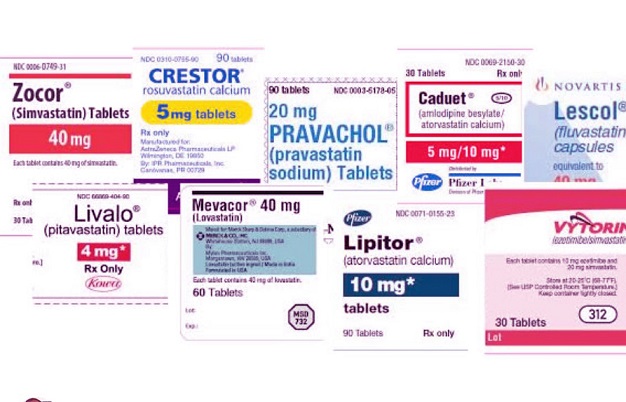Researchers Warn That Statins Can Harm Muscles and Even Cause Kidney Complications!
Nikhil Prasad Fact checked by:Thailand Medical News Team Nov 28, 2025 40 minutes ago
Medical News: Statins are among the world’s most widely used medications, relied upon by more than 200 million people to lower cholesterol and prevent heart attacks and strokes. But for years, millions of patients have complained about muscle aches, weakness and, in rare cases, dangerous muscle breakdown. Researchers from the University of British Columbia and the University of Wisconsin–Madison have now uncovered the precise biological mechanism behind these troubling effects, and their discovery could lead to safer next-generation statins. Their work provides long-awaited clarity, and for the first time this
Medical News report explains the molecular chain reaction that makes certain muscles vulnerable.
 Researchers uncover how statins trigger muscle damage by forcing open a key calcium channel in muscle cells
How Statins Misfire Inside Muscle Cells
Researchers uncover how statins trigger muscle damage by forcing open a key calcium channel in muscle cells
How Statins Misfire Inside Muscle Cells
The study team used advanced cryo-electron microscopy to zoom into a key muscle protein called the ryanodine receptor 1 (RyR1). This protein functions like a microscopic gate that controls calcium flow inside muscle cells. Calcium must be tightly regulated for muscles to contract and relax smoothly. The researchers discovered that when statins bind to RyR1, they force this calcium gate to open when it should remain closed. This unnatural calcium leak can overwhelm and eventually damage muscle fibers.
Dr Steven Molinarolo from the University of British Columbia explained that the images captured by their cryo-electron microscope revealed “almost atom-by-atom how statins latch onto this channel.” The damage comes from a persistent trickle of calcium escaping inside muscle cells, something that over time can cause pain, weakness and, in rare cases, severe muscle breakdown leading to kidney complications.
A Surprising Triple Binding Mechanism
One of the most significant discoveries is how atorvastatin—the widely used statin—interacts with RyR1. Instead of a single molecule, three statin molecules bind together in sequence to pry the channel open. The first attaches while the channel is closed, lightly shifting its structure and priming it. Then two more statin molecules wedge into the protein’s pseudo-voltage sensing domain, forcing the pore wide open and causing continuous calcium leakage.
This unusual “triple binding” mechanism appears to be responsible for a large share of muscle-related statin side effects. Importantly, the findings also suggest that many statins, not just atorvastatin, may activate this channel in similar ways. The detailed structural maps produced in the study provide drug developers with a new roadmap for modifying statin molecules to avoid RyR1 activation while still lowering cholesterol effectively.
Why Some Patients Suffer More Than Others
Not every statin user experiences muscle problems, and the study offers clues as to why. Genetic differences in the RyR1 protein can make some individuals more sensitive to statin-induced channel activation. People with c
ertain muscle-related genetic variants may therefore face a higher risk of muscle pain or more serious complications.
The research also shows that only skeletal muscle channels (RyR1) are strongly affected, while the heart’s version of the protein (RyR2) does not respond in the same way. This explains why statins do not typically cause heart-muscle problems, despite affecting skeletal muscles.
A Step Toward Safer Cholesterol Medications
The insights from the teams at the University of British Columbia and the University of Wisconsin–Madison open a pathway toward re-engineering statins to eliminate these unwanted effects. By adding chemical groups to the parts of the statin molecule that interact with RyR1, future versions of the drug could avoid muscle damage while preserving cholesterol-lowering power. Such improvements could help millions of patients stay on life-saving therapy without discomfort.
Conclusion
This breakthrough finally clarifies why statins, despite their medical benefits, sometimes harm muscle cells. By identifying exactly how atorvastatin and possibly other statins activate the RyR1 calcium channel, researchers have provided a powerful tool for designing safer drugs. The findings not only help explain why some patients are more vulnerable but also offer a realistic path toward statins that lower cholesterol without triggering muscle pain or weakness. With clearer understanding and better drug design, the next era of statin therapy may allow patients to protect their hearts without compromising muscle health.
The study findings were published in the peer reviewed journal: Nature Communications
https://www.nature.com/articles/s41467-025-66522-0
For the latest on the dangers of statin usage, keep on logging to Thailand
Medical News.
Read Also:
https://www.thailandmedical.news/articles/med-news
